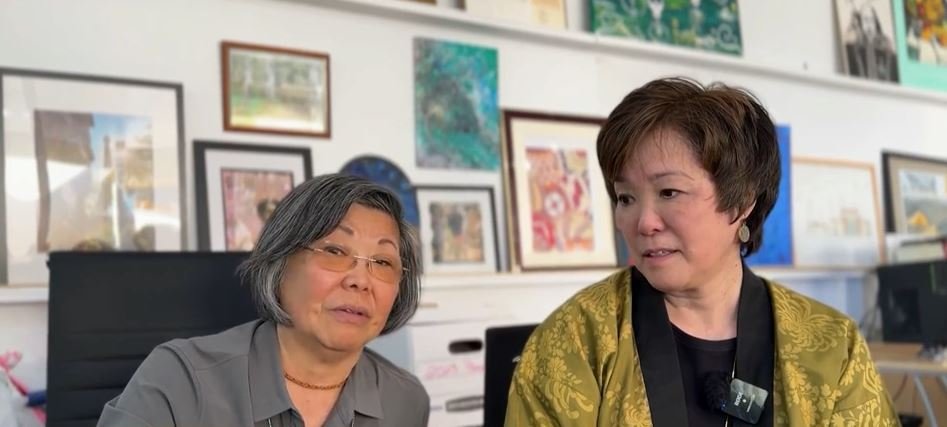Cousins seek family history after report on NorCal Japanese Americans sent to internment camps

Cousins from Chicago
By Ryan Yamamoto
Click here for updates on this story
MARYSVILLE, Yuba County (KPIX) — Two cousins from Chicago recently made the cross-country journey to a Northern California community to see if they could find answers about their family history.
“We are finding out a lot of things we didn’t know about,” said Peggy Ishikawa, “We are trying to piece together bits and piece of what we know.”
Peggy and Candice Nagakura made the decision to travel more than 2,000 miles after watching a story that aired on KPIX last year.
The story highlighted the rediscovery of the “Clyde Bush Photos” – a cache of pictures taken in 1942 of Japanese Americans from the Yuba-Sutter area, only days before they were shipped off to internment camps.
“I saw the first video when my brother sent it to me who lives in San Francisco,” said Peggy. “So he forwarded it to me, and I immediately spotted my mother, and then I spotted my grandmother.”
Both Peggy and Candace were hoping to unearth even more family photos by digging through the negatives taken by photographer Clyde Bush, but they could only identify four people – their grandfather, grandmother, mother, and her best friend.
But their visit still provided new details for David Read and Sue Cenjr-Moyers, the resident historians and keeper of the photos, including learning about their grandfather.
“His name was Kazumo Hiyashi, born in Japan and settled here in Marysville,” said Nagakura. “He was a businessman who owned a little market in town.”
“I’m looking at a family’s private history that needs to be shared, because these are real people, and this is what happened to them. And so that’s the story we want to tell,” said Cenjr-Moyers.
But despite not unearthing more archives about their family, the visit gave Peggy and Candance a glimpse of what life for Japanese-Americans in the area, many of whom were rounded up and sent to the Arboga Assembly Center before many were taken to the Tule Lake internment camp.
Today, a memorial sits on the site of the converted migrant shacks.
“It is really something that they (Japanese-Americans) are being recognized, that what happened to them meant something and means something,” said Ishikawa. “If we don’t pass it down, it is going to be lost. We need to keep a record and get the information out, otherwise it’s lost, and that’s hard to think about.”
Please note: This content carries a strict local market embargo. If you share the same market as the contributor of this article, you may not use it on any platform.
